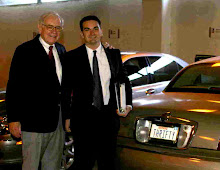And who says you can't predict the market?
Discouraging insight, for sure. Let us take a closer look, though. A value investor believes that a stock is worth the present value of some stream of cash flows that it will produce in the future. Mr. Buffett calculates this value by projecting out future “owner earnings” and discounting them back to present. The key variables, therefore, are the future owner earnings and the discount rate.
First, assume that our opinion of future owner earnings doesn’t change so as to isolate the effect that the discount rate will have on value. You can think of the discount rate as the opportunity cost of investing in Stock A over Stock B or Investment C. Now, if interest rates rise, so should our discount rate, since we would have more opportunities to do more with our money elsewhere. And since discount rates and present values are inversely related, value will decline, all else equal, as the result of a rise in interest rates.
From 1964 to 1981, the stock market went exactly nowhere. In aggregate, no money was made by investors during this period. But yet GDP nearly quadrupled. How is this possible, you may ask. Well, also during this period, interest rates rose dramatically. The rate on long-term government bonds went from a mere 4.2% in 1964 to 13.65% as the 1980s began. This had a devastating effect on stock prices. Then, as we are well aware, from 1981-1998 stocks rose more than tenfold. This can easily be explained by the remarkable drop in interest rates – all the way from that 13.65% in 1981 to next to nothing at the start of this decade. (GDP growth, by the way, was actually lower in this second period than it was in the first.)
It is easy to understand how interest rates affect bond prices. No one will want to buy a bond paying 6% if the going rate has risen to 8%, so the price drops. But keep in mind that the fundamental source of value for a stock is derived in the same way. Investors buy bonds to receive coupon payments in the future. Well, investors buy stocks to receive “coupons” that take the form of earnings per share, or perhaps “owner earnings” per share.
So the recent rise in short-term rates should dishearten the bullish stock investor to some extent. There are plenty of variables that will affect the stock market, but the one most fundamental to value is nearly certain to hurt stock prices, especially after long-term rates catch up to the recent increases in short-term rates. A 10% clip in your portfolio looks to be somewhat optimistic, at least until the rate hikes stop.
And by the way, just because I can predict the market doesn't mean I can predict it correctly. ;)


0 Comments:
Post a Comment
<< Home